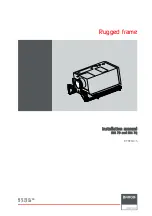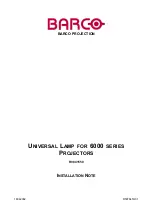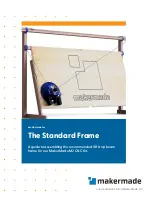
WWW.BALTIMOREAIRCOIL.COM
28
Main
Disconnect
Fuses
Voltage
Line
Phase
Three
G
G
Spray Pump
Aux. Contact
Supplied by Others
BLK
BLK
Class II
Transformer
24V Secondary
RED
BLK
YEL
YEL
BLK
Contactors
Controlling
Control Panel
L1
L2
L3
Controller
Liquid Level
Temperature
Combination
Series TL
Solitech
CT
N
C
NO
NC
T1
T2
G1
G2
Shielded Cable
Assembly
Sensor Probe/Cord
G2
G1
T2
T1
SH
No. 1
Heater
{
40
24
16
12
8
10
12
14
Size Amps
Wire Total
Wire Table
L1
L2
L3
Switch
Supplied By Others
Heater
No. 2
(If Required)
Immersion
Heaters
Figure 8.
Example Wiring Diagram for Stand Alone BAC Heater Control Panel (Refer to Submittal Drawing for Specific Wiring Diagram)
NOTE: Figure 8
is
superseded by any
drawing supplied
with the panel by the
manufacturer.
Electrical Reset and Start-up Lock Out (Optional):
1. If rated voltage is continuously applied to the reset circuit at unit start-up, the reset
solenoid energizes for a fixed time interval (approximately 30 sec), after which time
the solenoid is automatically de-energized by the thermistor. This provides a trip lock
out during machine start-up roughness.
2. The voltage must be removed from the reset circuit when the machine is stopped to
allow the thermistor to cool off.
3. The switch mechanism can be reset electrically by a momentary application of the
reset voltage or it can be reset manually.
Vibration Cutout Switch (VCOS)
The Mechanical Vibration Cutout Switch and the Optional Electronic Vibration Cutout
Switch should be tested and field adjusted at start-up and yearly thereafter.
Mechanical Vibration Cutout Switch (Standard)
Set Point Adjustment When Installed:
1. For safety, turn off, then lock and tag-out the electrical supply to the fan motor(s).
2. Turn adjustment screw counterclockwise 1/8 turn at a time until you hear the control
trip.
3. Once tripped, rotate adjustment screw ¼ turn clockwise. Push in the manual reset
button.
4. Start up the fan(s) to determine if the start-up will cause the cut-out switch to trip.
5. If the VCOS does not trip, start and stop the fan two more times. If the VCOS still does
not trip, then calibration is complete.
6. If the VCOS trips, follow the steps in the note to the left.
NOTE:
If the VCOS trips, turn off,
then lock and tag out the electrical
supply to the fan motor(s). Adjust
the set point screw an additional
1/4 turn clockwise, and push in the
manual reset button. Start up the
fan motor(s) to determine if the
start-up will cause the VCOS to trip.
Repeat this adjustment process
until the VCOS no longer trips when
the unit is operated. Make sure to
lock out and tag out the electrical
supply to the fan motor(s) before
entering the unit or re-setting the
switch, each time an adjustment
to the VCOS is made. After the final
adjustment has been made, start
and stop the fan motor(s) two more
times to ensure that the VCOS is
properly set.







































